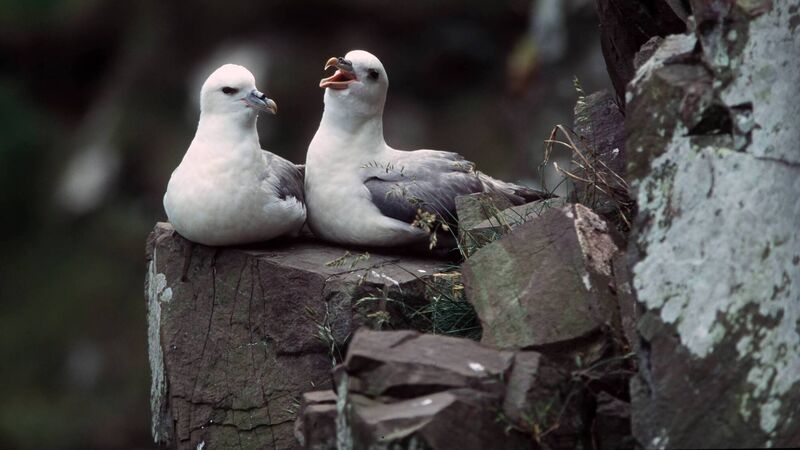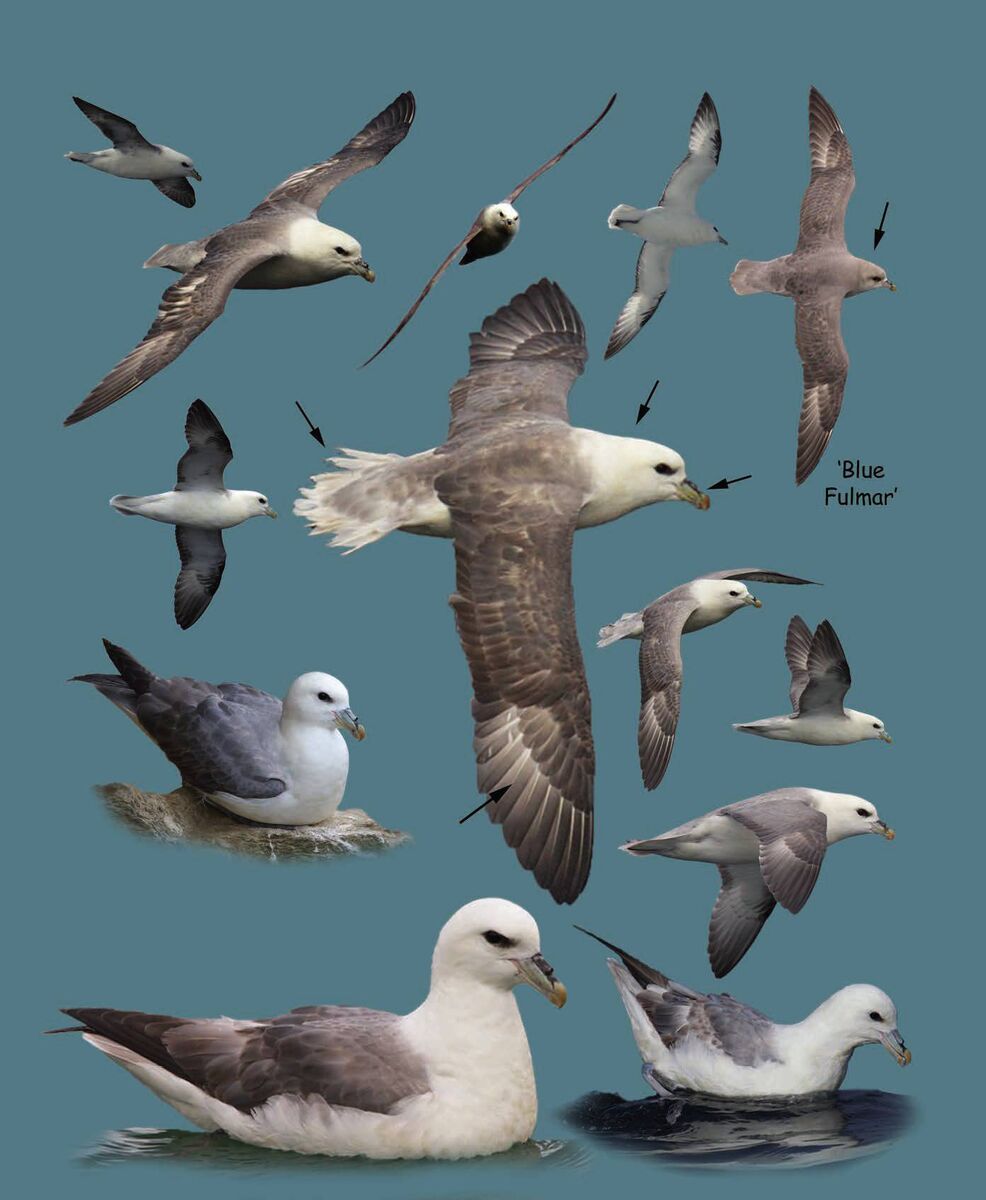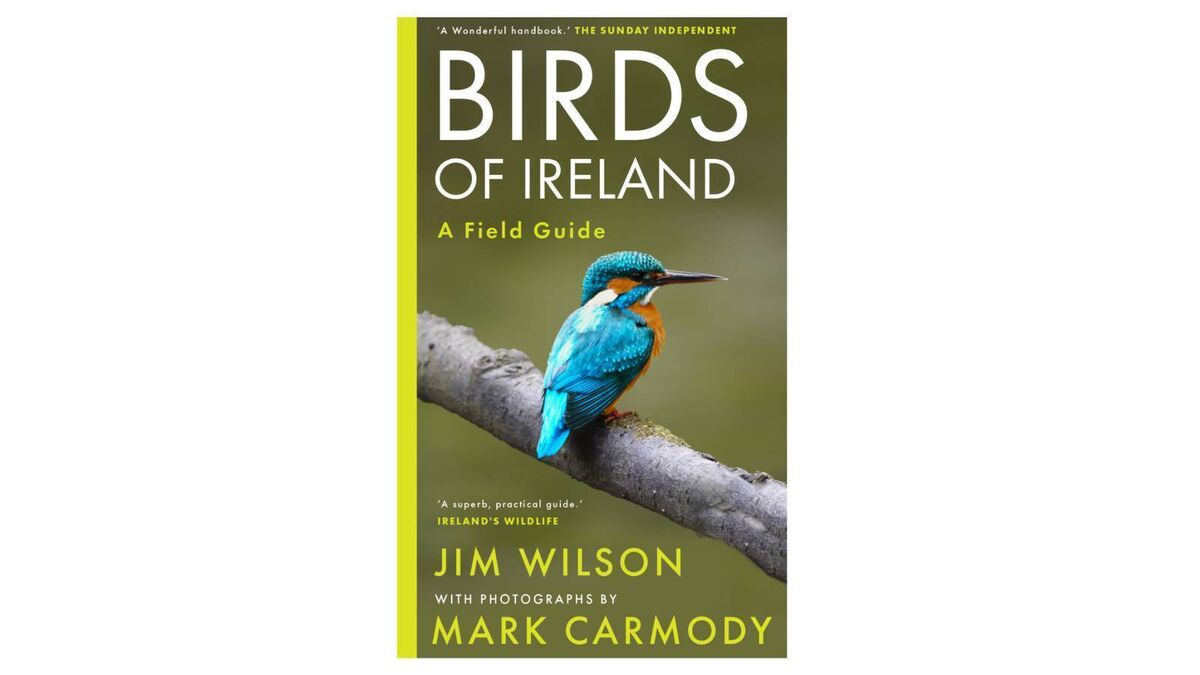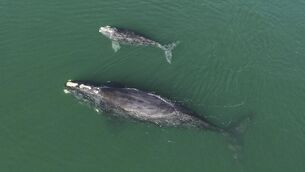Birds of Ireland: Fulmar

Fulmars nesting on the Cliffs of Moher
A fulmar is about 46-50 centimetres long with a wingspan of 105-110 centimetres.
They are a common breeding species found at sea and on coasts here all year round.
A fulmar is bigger than a rook and both sexes appear similar.
Fulmars of all ages have a white head and they are thick-necked with blue-grey or brown-grey underparts. They have a white underside and a light grey tail — and they have a short stout 'tubenose' beak. They have a stout cigar-shaped body.
Darker, higher-latitude birds are called 'blue flulmar'.

In flight a fulmar's pale patches at the base of their primaries are visible. They have shallow, stiff wingbeats punctuated with glides. The stronger the wind the longer and more undulating the glides, and like its relative, the albatross, it glides effortlessly even in gale-force winds.
A fulmar is usually vocal only at the nest, where it makes a laughing, squawking chatter.
Adjusting binoculars before using them is vital.
All binoculars are basically two monoculars, called barrels, which are connected by a central column and focusing wheel. The distance between the barrels is adjustable because the distance between our eyes varies from person to person.
Adjust the distance while looking through them by using a bending action on the binocular barrels until you see one circular image. This is the correct barrel distance for you.
Eyesight varies from person to person and often one eye is better than the other.
To adjust your binoculars for this, put a piece of paper or thin cardboard over the barrel with the adjustable eyepiece and, using the central focusing wheel, focus on something with sharp contrast about 15 or 20 metres away, such as a signpost or poster. Then block the barrel with the fixed eyepiece and focus on the same signpost or poster with the adjustable eyepiece until the image is sharp.
The binoculars are now adjusted to suit your eyes.
Featured in By Jim Wilson, with photographs by Mark Carmody

- Jim Wilson is a wildlife writer, broadcaster, tour leader, and former chairman of BirdWatch Ireland. He has been involved in the study and conservation of birds in Ireland for more than 45 years, contributing to several major surveys and international projects.
- Mark Carmody is an award-winning wildlife photographer, has a PhD in biochemistry and works as a European patent
attorney.







